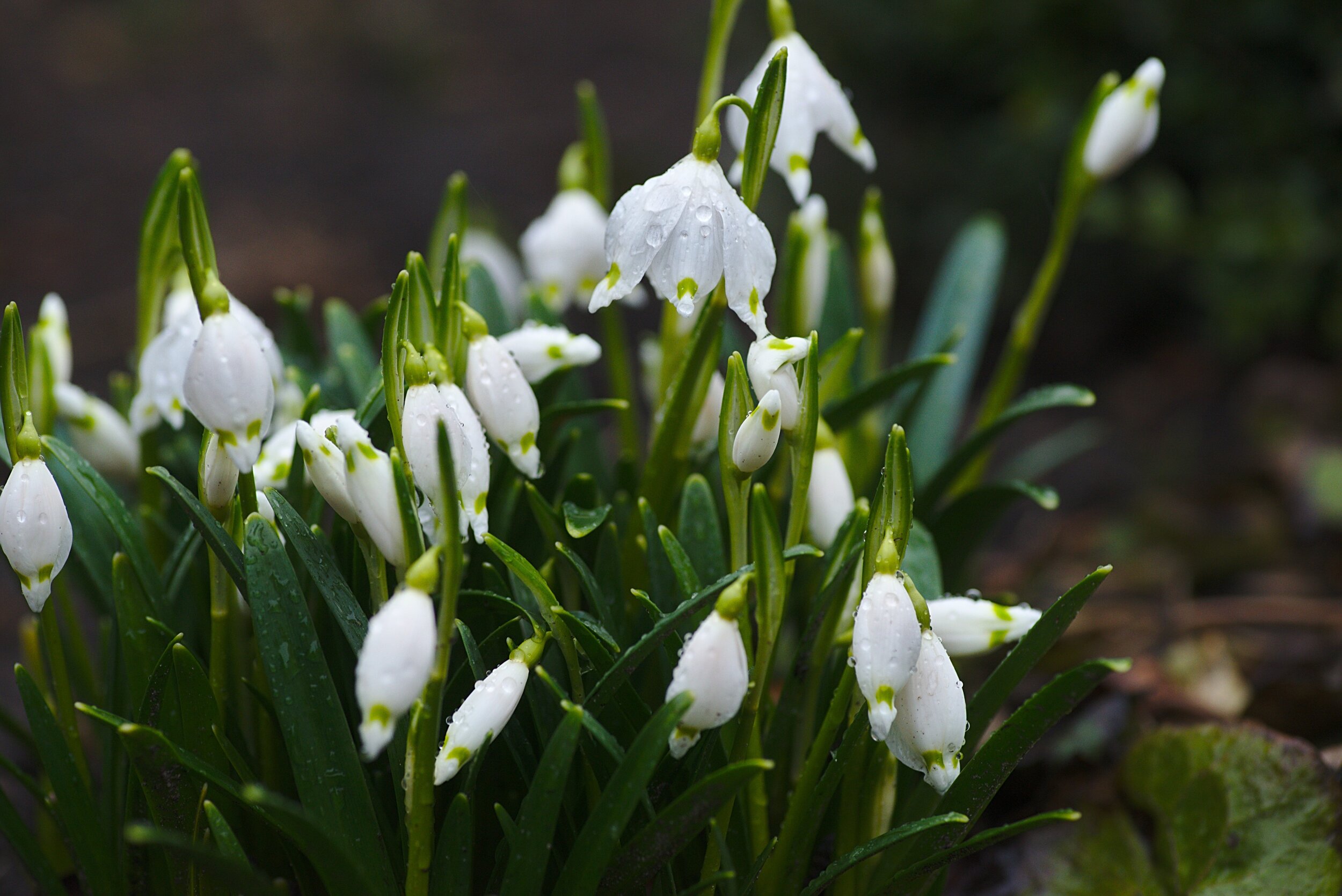Hello and welcome back to the fourth in a series of 12 posts about birth flowers! January’s birth flowers are quite lovely, and I’ll bet you’ll learn a host of things you never knew about the carnation before! Enjoy!
January Birth Flowers: Carnation and Snowdrop
Carnation
This beige and mauve and cream colored bouquet creates a Victorian vibe…
Meaning: Like the rose, (more on that in a few months!) the different colors of the carnation can symbolize different things. The light red color, (which I don’t think I’ve ever seen!) means admiration, while dark red symbolizes deep love. Purple carnations, (which I definitely have never seen), are a representation of capriciousness. White is remembrance, (which, if you’ve read a few of the previous birth flower posts, you will probably recognize as a pattern among white flowers of all kinds. Super interesting…) My favorite, however, is the pink carnation, because it represents a mother’s love. Christian lore says that pink carnations sprang up from the soil where Mary’s tears soaked the ground at the foot of the cross where her beloved son hung dying.
The pink carnation…
Name Origin: Also called the gillyflower, the name ‘carnation’ is thought to have been derived from ‘coronation,’ perhaps due to its individual petals that look like a crown, or the fact that it was frequently woven into ceremonial flower crowns by the Greeks. Its scientific name is ‘Dianthus Caryphyllus,’ or ‘Flower of the Gods.’ Some scholars think the name ‘carnation’ is derived from the Latin word ‘carnis,’ or ‘flesh’ that refers to the incarnation of Christ. “And [God] became flesh and dwelt among us…” (John 1:14)
History: The flower is over two thousand years old, and we know that it dated back to ancient Romans who enjoyed using it in their décor and art. In the early 1900’s, the carnation became the official Mother’s Day flower in America. In some cultures, the carnation is revered more than the rose, (which is a universally recognized flower of unsurpassed beauty. Apparently it is surpassable!) One source says that the carnation probably originated in the Pyrenees mountains as single blooms, but that the species has since become extinct. The carnation is an incredibly hardy flower, blooming early and braving the frosts and cold spells. When picked, it actually blooms for a very long time, so if you ever get a bouquet of carnations for your home, you can rest assured they’ll last a while for you!
Purple Carnations
Fun Facts:
· Leonardo Da Vinci painted a pink carnation in the hand of Mother Mary because it symbolized a mother’s undying love. The painting is called “The Madonna of the Carnation.”
· Some colors of carnations have a spicy clove-like smell, so on some occasions it was used as a substitution for the clove in vinegars and sauces.
· The carnation is one of the most popular flowers in the world
· In 1851, Joseph Breck published a book called The Flower Garden, and in it he described the carnation this way: “There is no flower more desirable in the flower-garden than the carnation. A well grown, superior variety, cannot be surpassed in elegance, beauty, or odor by any other flower…”
Snow Drop
The melting snow droplets linger on the snowdrop…
Meaning: The snowdrop used to be considered bad luck since it seemed to often grow in graveyards. But since then, because it is one of the first flowers to pop through the winter snow, represents hope and beauty. Personally, I think that the fact that it grows abundantly in graveyards is deeply beautiful. I see it as a hope of the Resurrection, or of eternal life beyond the grave. ‘Beauty springing up from the ashes’, so to speak.
Name Origin: Carl Linnaeus (famous botanist of the 18th century) gave the snowdrop’s its latin name ‘Galanthus nivalis’, or ‘Milk Flower of the snow.’ The French call the flower the ‘Perce-neige’ because it ‘pierces’ the snow, and the Germans call it ‘Schneeglockchen,’ or, ‘little snowbell.’
History: This flower originates in Europe, but the flower took its time in finding its way into the UK. It is a flower that commonly grows in the wild and is reproduced with the help of ants who eat the protein-filled part of the flower called the ‘elaisome’ and carry it through their tunnels. The elaisomes eventually germinate from the tunnels and poke determinedly up through the soil once again. It blooms in January and February and is one of the first (if not the first) flowers to bloom in the New Year. Though throughout its history the snowdrop has had polar opposite meanings, it is clear that, especially throughout literature of the 1700-1800s, the flower was a symbol of hope when hearts needed cheer the most in the midst of a desolate winter.
Fun Facts:
· Folklore warned against bringing snowdrops into your house; they were said to make your milk watery and your butter strangely colored. British lore said that if you brought them into your house they would become the harbinger of death. Surprisingly, this belief lasted until the early to mid 1900’s.
· In the woods off the Hodsock Priory Estate in Nottinghamshire, when the Snowdrops bloom they cover the ground in an estimated four million buds.
· A beautiful poem was written about the snowdrop by Anna Laetitia Barbauld (1743-1825). Though I don’t know the title, it goes like this:
“Now the glad earth her frozen zone unbinds,
And o’er her bosom breathe the western winds;
Already the Snowdrop dares appear
The first pale blossom of th’ unripen’d year;
As Flora’s breath, by some transforming power,
Had changed the icicle into a flower,
Its name and hue the scentless plant retains,
And winter lingers in its icy veins.”








